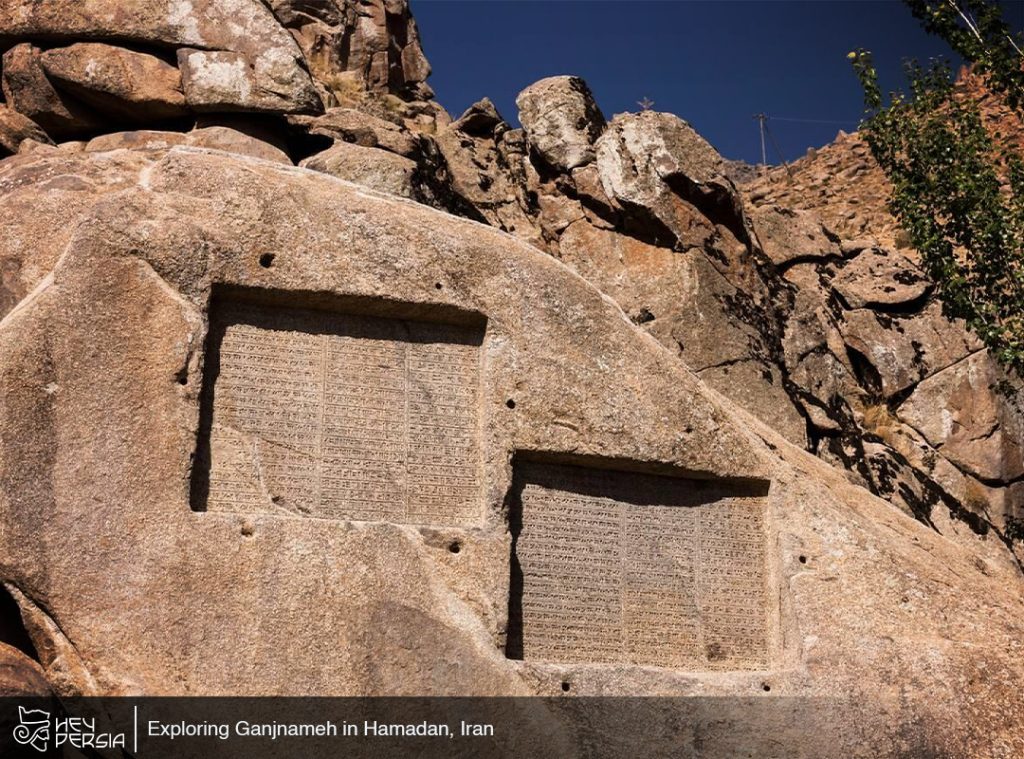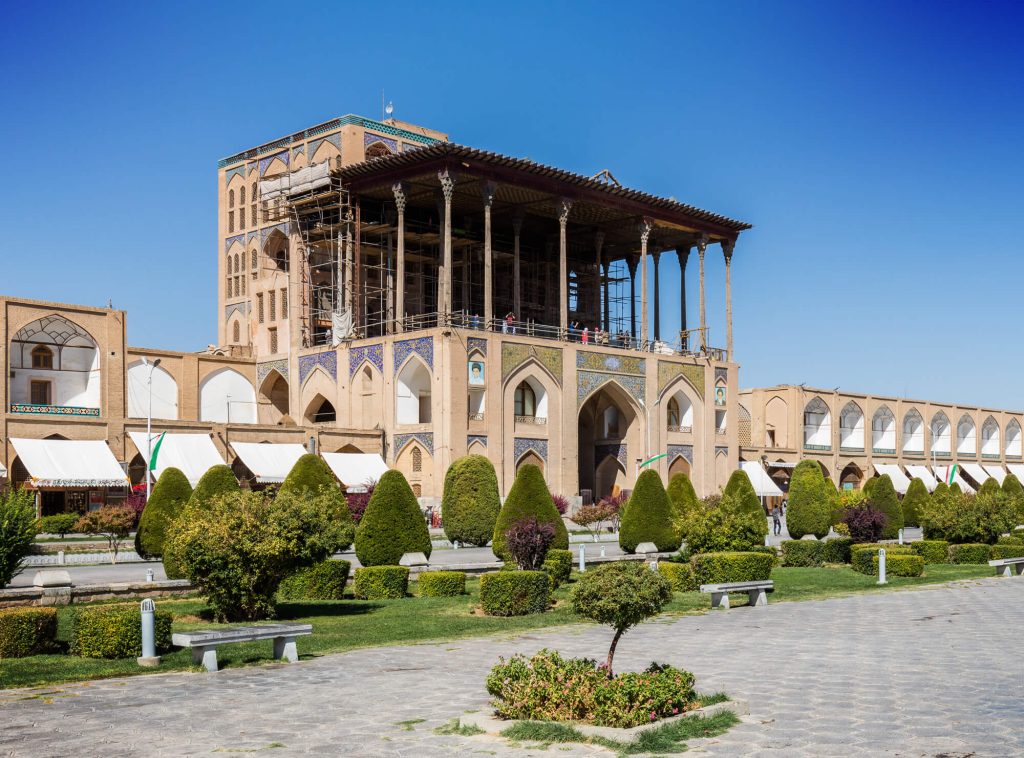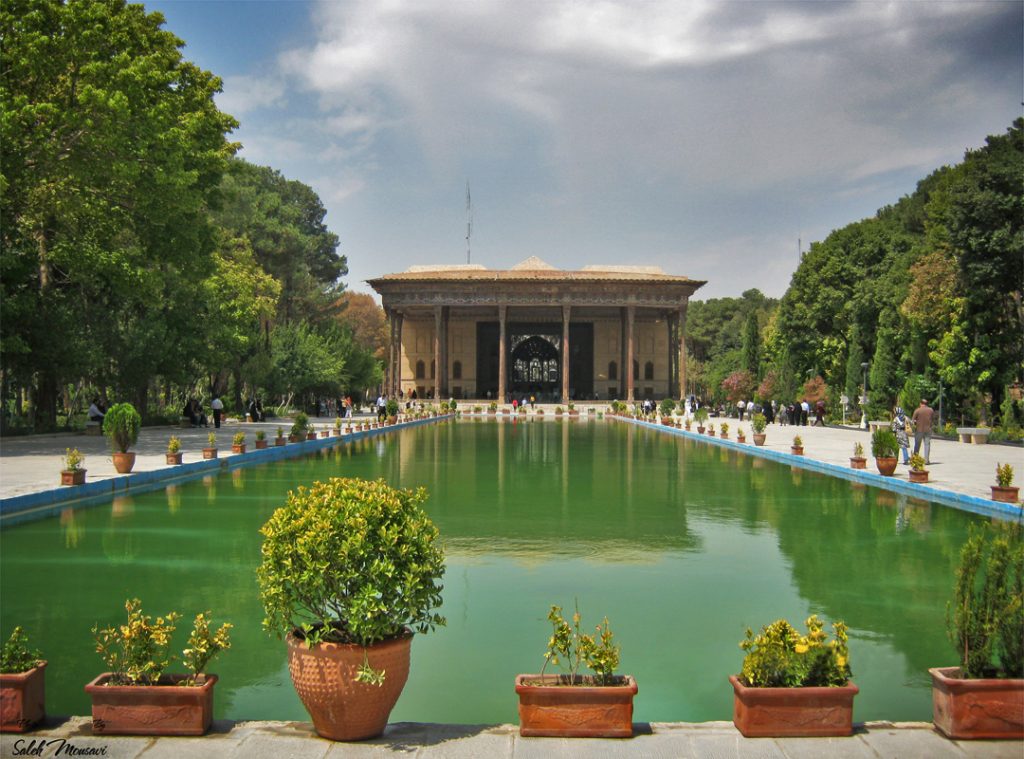Generally, Ganjnameh, located near Hamadan in western Iran. It is a historical site renowned for its ancient inscriptions and stunning natural beauty. This archaeological complex, nestled amidst the Zagros Mountains, offers visitors a glimpse into Iran’s rich cultural heritage while providing opportunities for exploration and contemplation. Let’s delve into the history, significance, and attractions of Ganjnameh in Hamadan. Learn more at Hey Persia.
Historical Background of Ganjnameh in Hamadan
Ganjnameh translates to “Treasure Epistle,” is home to a pair of ancient rock inscriptions. It carves into the cliffsides of Mount Alvand. These inscriptions, dating back to the Achaemenid period (circa 6th-4th century BCE), are attributed to Darius the Great and Xerxes the Great, two powerful Persian kings. The inscriptions, written in Old Persian cuneiform script, commemorate the kings’ achievements and glorify the Persian Empire.
Darius the Great Inscription
The larger of the two inscriptions at Ganjnameh is attributed to Darius the Great. He ruled the Persian Empire from 522 to 486 BCE. The inscription, carved in a vertical column, extols Darius’s conquests and accomplishments, proclaiming his divine mandate to rule over the vast territories of the empire. It serves as a testament to the power and grandeur of the Achaemenid dynasty during its heyday.
Natural Beauty
Beyond its historical and archaeological significance, Ganjnameh captivates visitors with its breathtaking natural beauty. Situated amidst the rugged terrain of the Zagros Mountains, the site offers panoramic views of the surrounding landscape, characterized by rocky cliffs, lush valleys, and cascading waterfalls. The juxtaposition of ancient inscriptions against the backdrop of majestic mountains creates a scene of timeless beauty and wonder.

Xerxes the Great Inscription in Ganjnameh in Hamadan
The smaller inscription at Ganjnameh is attributed to Xerxes the Great, the son of Darius and his successor as king of Persia. Carved below Darius’s inscription, Xerxes’s inscription praises his father’s achievements and reaffirms his own commitment to upholding the legacy of the Persian Empire. Together, these inscriptions provide valuable insights into the history and ideology of the Achaemenid rulers.
Archaeological Significance of Ganjnameh in Hamadan
Ganjnameh is not only a site of historical importance but also an archaeological treasure trove. In addition to the rock inscriptions, the site features remnants of ancient structures, including rock-cut platforms and staircases, which are believed to have served ceremonial or administrative purposes during the Achaemenid period. Archaeologists continue to study Ganjnameh to unravel its secrets and shed light on Iran’s ancient past.
Tourist Attractions
Ganjnameh is a popular destination for tourists and history enthusiasts visiting Hamadan and its surrounding region. Visitors can explore the site’s archaeological remains, marvel at the ancient inscriptions, and soak in the awe-inspiring scenery. Guided tours are available for those interested in learning more about the historical and cultural significance of Ganjnameh, while nature lovers can embark on hikes and nature walks to explore the surrounding mountains and valleys.

Cultural Heritage
As a testament to Iran’s rich cultural heritage, Ganjnameh holds special significance for Iranians. It serves as a source of national pride. The ancient inscriptions, with their messages of royal authority and imperial glory. It symbolizes the enduring legacy of the Persian Empire and its contributions to world history. Ganjnameh is also a reminder of Iran’s deep-rooted cultural and linguistic heritage, as reflected in the Old Persian cuneiform script used in the inscriptions.
Preservation Efforts
Efforts are underway to preserve and protect Ganjnameh and its surrounding environment for future generations. Conservation initiatives aim to safeguard the site’s archaeological remains, prevent erosion of the rock inscriptions, and promote sustainable tourism practices. Additionally, These efforts are essential for maintaining Ganjnameh’s historical integrity and ensuring that it remains a cherished cultural landmark for years to come.
Ganjnameh in Hamadan
In conclusion, Ganjnameh in Hamadan, Iran, is a captivating blend of history, archaeology, and natural beauty. With its ancient rock inscriptions, stunning mountain scenery, and cultural significance. The site offers visitors a unique opportunity to connect with Iran’s rich cultural heritage. You can explore the legacy of the Achaemenid Empire. Finally, Whether admiring the inscriptions, hiking through the mountains, or simply enjoying the panoramic views, a visit to Ganjnameh is sure to leave a lasting impression.





